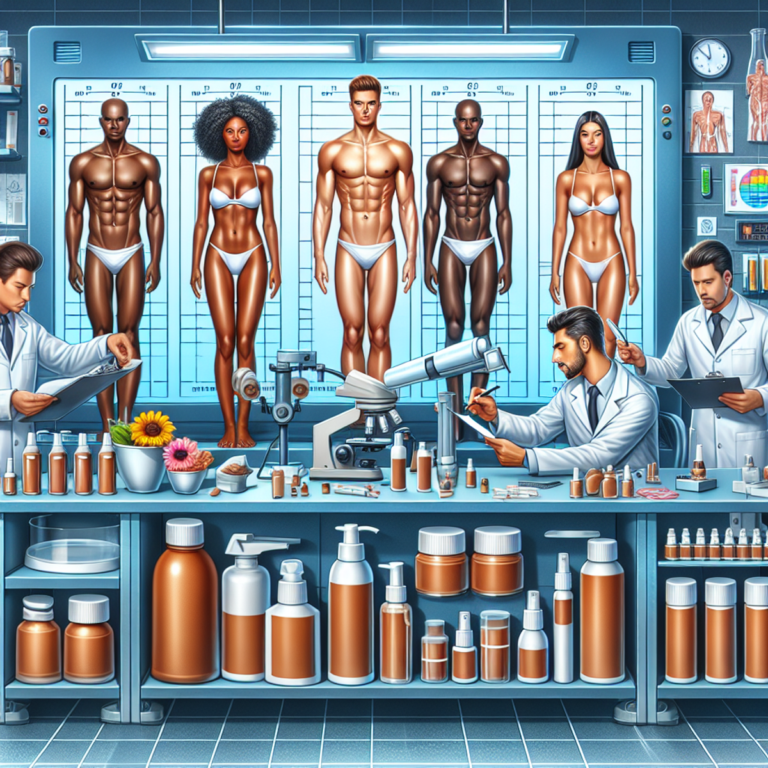Anti-acne diet: What to eat for clearer skin and fewer pimples

Introduction
Many people want to have clearer skin and fewer pimples, so they try different skincare products and routines. But the secret to getting rid of pimples might not just be what you put on your skin, but also what you eat. The idea of an anti-acne diet is becoming popular as more research shows the link between diet and skin health.
A well-balanced anti-acne diet can be a powerful ally in your quest for clearer skin. By focusing on specific food choices, you might find ways to reduce inflammation, regulate hormone levels, and manage factors that contribute to breakouts.
In this article, you’ll discover:
- How acne develops and different types that may affect you.
- The complex relationship between what you eat and how it affects your skin.
- Key components of an anti-acne diet plan, including foods to embrace like low glycemic index foods and omega-3 fatty acids.
- Other dietary considerations like zinc-rich foods and hydration for optimal skin health.
This guide aims to provide practical insights into how dietary changes can complement your skincare routine as a strategy for how to remove pimples overnight and maintain long-term skin clarity.
Understanding Acne: The Skin’s Struggle with Breakouts
Acne is a complex skin condition that often begins when hair follicles become clogged with oil and dead skin cells. This blockage creates an environment where bacteria can thrive, leading to inflammation and the formation of acne lesions. Understanding the different types of acne can help in determining how to get rid of breakouts effectively.
Types of Acne
- Cystic Acne: Characterized by painful, deep cysts beneath the skin, cystic acne is often caused by hormonal changes and can leave scars if not treated properly.
- Hormonal Acne: Typically manifests around the jawline and chin area, hormonal acne is linked to fluctuations in hormones, such as during puberty or menstrual cycles.
- Comedonal Acne: Includes blackheads and whiteheads, resulting from clogged pores without much inflammation.
- Inflammatory Acne: Presents as red pimples and pustules due to bacterial activity and infection within blocked pores.
Causes of Acne
Various factors contribute to acne formation on the face and body:
- Excess Oil Production: Overactive sebaceous glands produce excess sebum, increasing the likelihood of clogged pores.
- Bacterial Growth: Propionibacterium acnes, a bacterium found on the skin, can multiply rapidly within clogged follicles.
- Hormonal Imbalances: Changes in hormone levels can increase oil production, leading to more frequent breakouts.
- Genetics: Family history plays a significant role in determining one’s susceptibility to acne.
To effectively manage acne and prevent further breakouts, understanding these underlying causes is crucial. Exploring methods on how to remove pimples naturally and permanently involves targeting these root causes through skincare routines and dietary adjustments. Additionally, knowing how to get rid of back pimples or remove pimple marks can be pivotal in achieving clearer skin.
The Connection Between Diet and Acne: Can What You Eat Really Make a Difference?
The quest for clearer skin often leads us to scrutinize our dietary habits. The relationship between diet and skin health is increasingly recognized by dermatologists and nutritionists alike. Certain foods can influence the frequency and severity of breakouts, making it essential to understand dietary influence on acne.
Key Insights
1. Food Choices Impact Skin Clarity
Consuming high-glycemic foods like sugary snacks, white bread, or processed items may exacerbate acne by causing spikes in blood sugar and insulin levels. These spikes can lead to increased oil production on the skin, possibly resulting in more frequent outbreaks.
2. Complexity of the Diet-Acne Connection
While it’s tempting to look for quick fixes on how to get rid of small bumps on face or how to get rid of cystic pimple, the link between diet and acne isn’t straightforward. Individual responses to food vary significantly due to genetic factors, personal health conditions, lifestyle habits, and even environmental influences.
Challenges in Understanding
1. Acne Manifestation
Acne can manifest as tiny bumps or cystic pimples that are notoriously difficult to manage with diet alone. For instance, strategies on how to get rid of little bumps on face or how to get rid of tiny bumps on face often require a multifaceted approach including topical treatments and lifestyle adjustments.
2. Varied Responses
While some people find relief by altering their diets—such as reducing dairy intake or incorporating more omega-3 fatty acids—others might not see significant changes. Understanding how diet affects your skin requires patience and personal experimentation.
Exploring these relationships further provides valuable insights into managing breakouts effectively through dietary choices, while acknowledging that what works for one person may not work for another. This complexity underscores the importance of a personalized approach when considering dietary interventions for clearer skin.
Key Components of an Anti-Acne Diet Plan: Foods to Embrace for Clearer Skin!
1. Low Glycemic Index Foods: Balancing Blood Sugar Levels for Breakout-Free Skin
An effective anti-acne diet plan often focuses on maintaining balanced blood sugar levels, and one way to achieve this is by incorporating low glycemic index (GI) foods into your meals. These foods are digested and absorbed more slowly, leading to a gradual rise in blood sugar and insulin levels, which may help in reducing acne flare-ups.
What are Low Glycemic Index Foods?
- Whole Grains: Options such as quinoa, brown rice, barley, and oats offer a lower GI compared to their refined counterparts like white bread or pastries. Whole grains not only help maintain steady blood sugar levels but also provide essential nutrients that promote skin health.
- Legumes: Beans, lentils, chickpeas, and peas are excellent choices. They’re packed with fiber, protein, and various vitamins and minerals that support overall well-being while keeping your skin clear.
- Fruits and Vegetables: Most fruits and vegetables have a low GI. Apples, pears, berries, spinach, kale, and broccoli are just a few examples of nutrient-rich options that can contribute to clearer skin.
The Role of High GI Foods in Acne
High GI foods like sugary snacks and processed items such as white bread can cause rapid spikes in blood sugar levels. This sudden increase triggers the body to produce more insulin, which may lead to increased oil production in the skin—a common factor contributing to acne breakouts. Reducing the intake of high GI foods can help prevent pimples from forming on the face and assist in managing existing acne conditions.
Incorporating low GI foods into your daily diet can be a strategic approach if you’re wondering how to stop pimples or looking for ways on how to get rid of spots quickly. By focusing on whole grains, legumes, fruits, and vegetables, you create a foundation for an anti-acne diet that supports clearer skin while potentially reducing the frequency of breakouts.
Understanding this connection between diet and acne allows you to make informed food choices that promote better skin health over time. Additionally, exploring hormonal acne diets could provide further insights into managing acne through dietary changes.
2. Omega-3 Fatty Acids: The Inflammation Fighters Your Skin Needs!
Including omega-3 fatty acids in your anti-acne diet plan can be a powerful way to combat acne. These essential fats are known for their ability to reduce inflammation, which is often behind types of acne like cystic and hormonal acne.
Sources of Omega-3 Fatty Acids:
- Fatty Fish: Salmon, mackerel, sardines, and tuna are excellent sources of omega-3s. Including these fish in your meals can help manage inflammation and support skin health.
- Plant-Based Options: For those who prefer plant-based diets, walnuts, flaxseeds, chia seeds, and hemp seeds provide valuable amounts of omega-3s. These foods can be easily incorporated into snacks or as toppings on salads and yogurts.
Omega-3 fatty acids help reduce inflammation by adjusting how the body responds to it. This means you might have fewer breakouts and less severe acne spots. This can be especially helpful if you’re looking for ways to reduce pimples, manage current breakouts, or even learn how to prevent future acne flare-ups.
Eating foods rich in omega-3s could also help lessen pimple scars over time by creating a healthier environment for your skin. If you’re looking for ways to deal with things like how to get rid of pimples on forehead overnight or how to shrink a cystic pimple overnight, adding more omega-3s to your diet might be beneficial along with other treatments.
Adding omega-3-rich foods fits well with the goal of naturally improving skin health while tackling the underlying causes of acne-related inflammation. This approach goes hand in hand with skincare routines that include topical treatments and other lifestyle changes aimed at achieving clearer skin.
3. Dairy Products and Acne Severity: Is There a Link?
Many people interested in an anti-acne diet plan are curious about the connection between dairy consumption and acne severity. Research suggests that dairy, especially skim milk, might be associated with higher levels of insulin-like growth factor 1 (IGF-1). IGF-1 is a hormone known to stimulate sebaceous gland activity, potentially leading to increased sebum production and thus contributing to acne.
How Dairy May Exacerbate Breakouts
- Hormonal Influence: Dairy products can influence hormonal balance in the body. The presence of hormones in milk might affect your skin, particularly if you are sensitive or prone to hormonal fluctuations.
- Increased IGF-1 Levels: Skim milk has been specifically highlighted for its potential impact on IGF-1 levels. Elevated IGF-1 can lead to excess oil production, clogging pores and creating an environment where acne-causing bacteria thrive.
- Inflammatory Response: Some individuals may experience heightened inflammatory responses due to dairy consumption. This inflammation could exacerbate existing acne lesions or contribute to new breakouts.
Making changes to your diet, like cutting back on dairy, might help manage acne breakouts. If you’re wondering how to stop pimples from appearing on your face or how to effectively prevent them, it could be beneficial to consider the role of dairy in your diet.
If you’re looking for natural ways to remove pimple scars or get rid of zits quickly, understanding dietary triggers like dairy could work alongside topical treatments. Exploring low GI foods and maintaining stable blood sugar levels through an anti-acne diet plan could further support clearer skin.
4. Fruits, Vegetables, and Antioxidants for Skin Health: Nature’s Beauty Boosters!
A wide variety of fruits and vegetables is a key part of an anti-acne diet plan, offering a natural way to achieve clearer skin. Including colorful produce like oranges, carrots, and spinach in your diet provides essential nutrients that support skin health.
The secret lies in the antioxidants found in these foods, which play a crucial role in fighting oxidative stress—a factor that contributes to acne. Oxidative stress can make skin conditions worse by causing inflammation and damage to cells. Antioxidants act as protectors, neutralizing harmful molecules and reducing the chances of breakouts.
Important vitamins like Vitamin C and E, found in fruits such as strawberries and vegetables such as bell peppers, are known for their ability to improve skin. These vitamins help repair damaged skin and reduce blemishes, making them essential for those looking for ways to prevent pimples or naturally remove acne scars.
Including a wide range of fruits and vegetables not only helps manage acne but also promotes overall skin health. For those looking for quick ways to get rid of zits or pimple scars, adding antioxidant-rich foods to their diet is a proactive approach.
By making dietary choices that create an environment less favorable for acne development, you are supporting your skincare routine from the inside out. This approach recognizes the complex relationship between what you eat and its effect on maintaining clear, healthy skin. In the next section, we will explore how whole grains can affect insulin response and blood sugar levels—an important consideration for those dealing with breakouts.
5. Whole Grains vs. Refined Grains: Which is Better for Acne-Prone Skin?
Choosing the right type of grains in your diet can play a significant role in an anti-acne diet plan. Whole grains such as brown rice and quinoa are often recommended over refined grains like white bread. This choice can significantly affect blood sugar levels and insulin response, both of which are crucial in understanding how to stop pimples from forming on your face.
Whole grains maintain their natural fiber content, which helps to slow down the absorption of sugars into the bloodstream. This leads to a lower glycemic load and consequently, a more stable insulin response. A consistent insulin level is beneficial for reducing acne flare-ups, potentially helping you achieve clearer skin and fewer pimples.
Refined grains, however, have undergone processing that removes the fiber-rich outer layer. This process results in foods that are quickly absorbed by the body, causing spikes in blood sugar levels and increased insulin production. Such spikes can lead to higher oil production in the skin, contributing to breakouts and making it harder to get rid of spots or reduce pimple scars naturally.
Opting for whole grain options supports glycemic load management, aiding those who are learning how to prevent pimples or stop breakouts altogether. By incorporating whole grains into your meals, you’re not only supporting your skin health but also embracing a nutritious lifestyle that could help shrink cystic pimples overnight or address tiny bumps on the face quickly.
Incorporating low GI foods such as whole grains into your diet is a proactive step toward achieving clearer skin and managing acne effectively.
Other Dietary Considerations for Clearer Skin: Zinc-Rich Foods, Hydration, And More!
6. Zinc-Rich Foods: Beans, Nuts, And Seeds That Support Healthy Complexion!
Zinc plays a crucial role in maintaining a healthy complexion and managing acne-related issues. This essential mineral is known for its inflammation control and skin healing properties, making it important in an anti-acne diet aimed at achieving clearer skin and fewer pimples.
Why Zinc is Important for Your Skin:
- Inflammation Reduction: Zinc helps to calm inflammation associated with acne lesions, potentially reducing the severity of breakouts.
- Skin Healing Properties: It promotes the healing of damaged skin, assisting in how to get rid of deep pimples and other skin blemishes.
- Regulation of Oil Production: By controlling sebum production, zinc may help prevent clogged pores that lead to pimples.
Sources of Zinc for Clearer Skin:
To incorporate zinc into your diet effectively, consider these nutrient-rich foods:
- Beans: Chickpeas, lentils, and kidney beans are excellent plant-based sources of zinc. Incorporating these into your meals can support healthier skin.
- Nuts: Almonds and cashews offer a tasty way to boost zinc intake while also providing healthy fats that benefit overall skin health.
- Seeds: Pumpkin seeds are particularly high in zinc and can be easily added to salads or smoothies for an extra nutritional punch.
Incorporating these foods can complement strategies like learning how to treat tiny bumps on the face or even how to shrink a pimple in minutes. Maintaining adequate zinc levels through diet could also aid in reducing redness quickly and managing teenage pimples naturally at home.
Staying well-hydrated is another key factor in maintaining clear skin. Hydration supports your body’s natural detoxification processes, helping you manage how to remove dark spots caused by pimples overnight or how to get rid of tiny bumps on the forehead.
7. Staying Hydrated: The Key To Radiant Skin
Keeping your skin clear and vibrant begins with proper hydration. Drinking enough water throughout the day aids in maintaining skin elasticity, reducing the appearance of fine lines, and flushing out toxins that can make acne worse. Adequate hydration plays a crucial role in an anti-acne diet, supporting your body’s natural ability to heal and regenerate skin cells.
Benefits of Staying Hydrated:
- Promotes skin clarity: Helps remove impurities that may accumulate on the skin.
- Supports skin healing: Essential for repairing damaged tissue and reducing inflammation associated with acne lesions.
- Controls oil production: Balancing water levels can prevent overproduction of sebum, which often leads to breakouts.
Daily Water Intake Recommendations:
- Typically, drinking at least 8 glasses (about 2 liters) of water daily is advised.
- Individual needs vary based on factors like activity level, climate, and overall health. Listen to your body and adjust intake accordingly.
Incorporating these hydration practices can be a game-changer in your quest to stop getting pimples and achieve a healthier complexion. By prioritizing water intake, you support not only clearer skin but overall well-being.
Foods To Avoid For Better Skin Health: Steering Clear Of Acne Triggers!
High-Sugar Foods And Processed Snacks As Common Culprits
When considering an anti-acne diet—aimed at achieving clearer skin and fewer pimples—it’s crucial to pay attention to the foods you should avoid. High-sugar foods and processed snacks often make the list of common culprits when it comes to exacerbating acne.
1. Sugary Cereals and Soda Drinks
These are everyday examples of high-sugar foods that many people consume without considering their impact on skin health. The sugar content in these products can lead to spikes in blood glucose levels, triggering the body’s inflammatory response. This inflammation can worsen existing breakouts, making it more challenging to clear pimples effectively.
2. Processed Foods
Chips, candy bars, and packaged baked goods fall into this category. These snacks often contain refined carbohydrates and unhealthy fats that not only contribute to systemic inflammation but also increase oil production in the skin. This can lead to clogged pores, which further aggravate acne conditions.
Understanding how these food choices impact your skin is a step towards better blemish management. By reducing your intake of high-sugar and processed items, you potentially lessen the inflammatory processes that exacerbate acne. This dietary adjustment complements other home remedies for pimples and pimple treatment options available.
Integrating these insights into your lifestyle can assist in pimple scar removal and improve outcomes from pimple scar removal creams. It also enhances efforts in addressing related issues like how to get rid of little bumps on arms or how to get bumps off your face.
For those seeking pimple treatment at home or looking for effective pimple solutions, steering clear of these food triggers is a proactive approach. Whether you’re focused on pimples on face removal tips or seeking home remedies for pimples on buttocks, dietary adjustments play a supportive role in achieving clearer skin.
Keeping A Food Diary To Identify Your Personal Triggers: Journaling For Clearer Skin!
Tracking Your Meals And The Effects On Your Skin Over Time
A food diary can be a powerful tool in your quest to get rid of pimples and achieve clearer skin. By tracking what you eat and correlating it with your skin’s condition, you may uncover specific dietary patterns that contribute to breakouts. This method is particularly useful when standard treatments like the best cream to remove pimple marks fast or pimples on buttocks treatment don’t address the root cause.
How to Maintain a Food Diary Effectively:
- Consistency Is Key
- Record every meal, snack, and beverage you consume daily. Consistency helps identify patterns over weeks or months.
- Detail Matters
- Include specifics such as portion sizes, ingredients, and any seasonings or condiments used. These details can reveal hidden triggers.
- Note Skin Changes
- Document changes in your skin’s condition each day, noting new pimples, improvements, or reactions to certain foods.
- Highlight Patterns
- Review your diary regularly to spot correlations between certain foods and skin flare-ups. This might help in identifying individual triggers through journaling practice.
- Reflect on Lifestyle Factors
- Consider other factors like stress levels, sleep quality, and skincare products used alongside dietary entries for comprehensive insights.
The food diary benefits extend beyond identifying problem foods; it encourages mindful eating and can guide you towards an effective anti-acne diet. While this approach requires time and patience, it’s often regarded as the best way to get rid of pimples by understanding personal sensitivities. Combining this strategy with appropriate skincare routines enhances its efficacy in achieving healthier skin.
Engaging in this self-reflective practice empowers you to make informed decisions about your diet, ultimately supporting your journey towards clearer skin with fewer pimples.
Patience Is Key When Making Dietary Changes For Clearer Skin!
Understanding The Timeline For Results And Staying Consistent With Healthy Eating Habits
Starting an anti-acne diet journey requires patience and persistence. It can take up to 12 weeks to see noticeable improvements in your skin after making these dietary changes. This timeline is important for setting realistic expectations and avoiding discouragement in the beginning.
Consistency is crucial in experiencing the benefits of dietary changes. By sticking to these new eating habits over time, you’ll have a better chance of having clearer skin and fewer pimples. Here are some key points to consider:
- Dietary Changes Timeline: The path to clearer skin isn’t instantaneous. Cellular turnover and reduction in inflammation require time, which underscores the importance of sticking with the plan despite initial doubts.
- Long-Term Commitment: Just as skincare routines demand regularity, so do dietary modifications. Integrating anti-acne foods into your daily meals consistently enhances your chances of achieving desired results.
- Building Sustainable Habits: Focus on creating a balanced and enjoyable meal plan that incorporates low glycemic index foods, omega-3 fatty acids, and antioxidants-rich produce. This not only aids your skin but also promotes overall health.
A proactive approach involves monitoring progress through a food diary. Writing down what you eat helps you identify potential triggers or patterns that may affect your skin’s condition. Making adjustments based on these insights ensures a personalized strategy tailored to your unique needs.
While patience is essential, remember that dietary changes are part of a holistic approach to managing acne. Combining them with suitable skincare treatments will maximize their effectiveness and help you achieve clearer skin in the long run.
FAQs (Frequently Asked Questions)
What is an anti-acne diet?
An anti-acne diet consists of specific food choices aimed at promoting clearer skin and reducing the occurrence of pimples. It emphasizes a well-balanced intake of nutrients that support skin health and can enhance your skincare routine.
How does diet influence acne formation?
Diet plays a significant role in skin health. Certain foods, especially those with a high glycemic index, can lead to increased insulin levels, which may contribute to acne flare-ups. Conversely, low glycemic index foods can help maintain balanced blood sugar levels, potentially reducing breakouts.
What are some key components of an anti-acne diet plan?
Key components include low glycemic index foods such as whole grains and most fruits and vegetables, omega-3 fatty acids found in fatty fish and flaxseeds to reduce inflammation, and minimizing dairy products which may exacerbate acne severity due to their impact on hormone levels.
Can omega-3 fatty acids help with acne?
Yes, omega-3 fatty acids are known for their anti-inflammatory properties. Incorporating sources like salmon, walnuts, and flaxseeds into your diet can help reduce inflammation in the body, potentially benefiting those suffering from inflammatory types of acne.
Is there a link between dairy consumption and acne severity?
Research suggests that there may be a connection between dairy consumption and increased acne severity. Dairy products can elevate IGF-1 levels, which may stimulate sebaceous gland activity and contribute to the formation of acne lesions.
What types of foods should I avoid for clearer skin?
To promote clearer skin, it is advisable to avoid high glycemic index foods such as sugary snacks, white bread, and processed carbohydrates. These foods can cause spikes in insulin levels, leading to increased oil production and potential breakouts.










